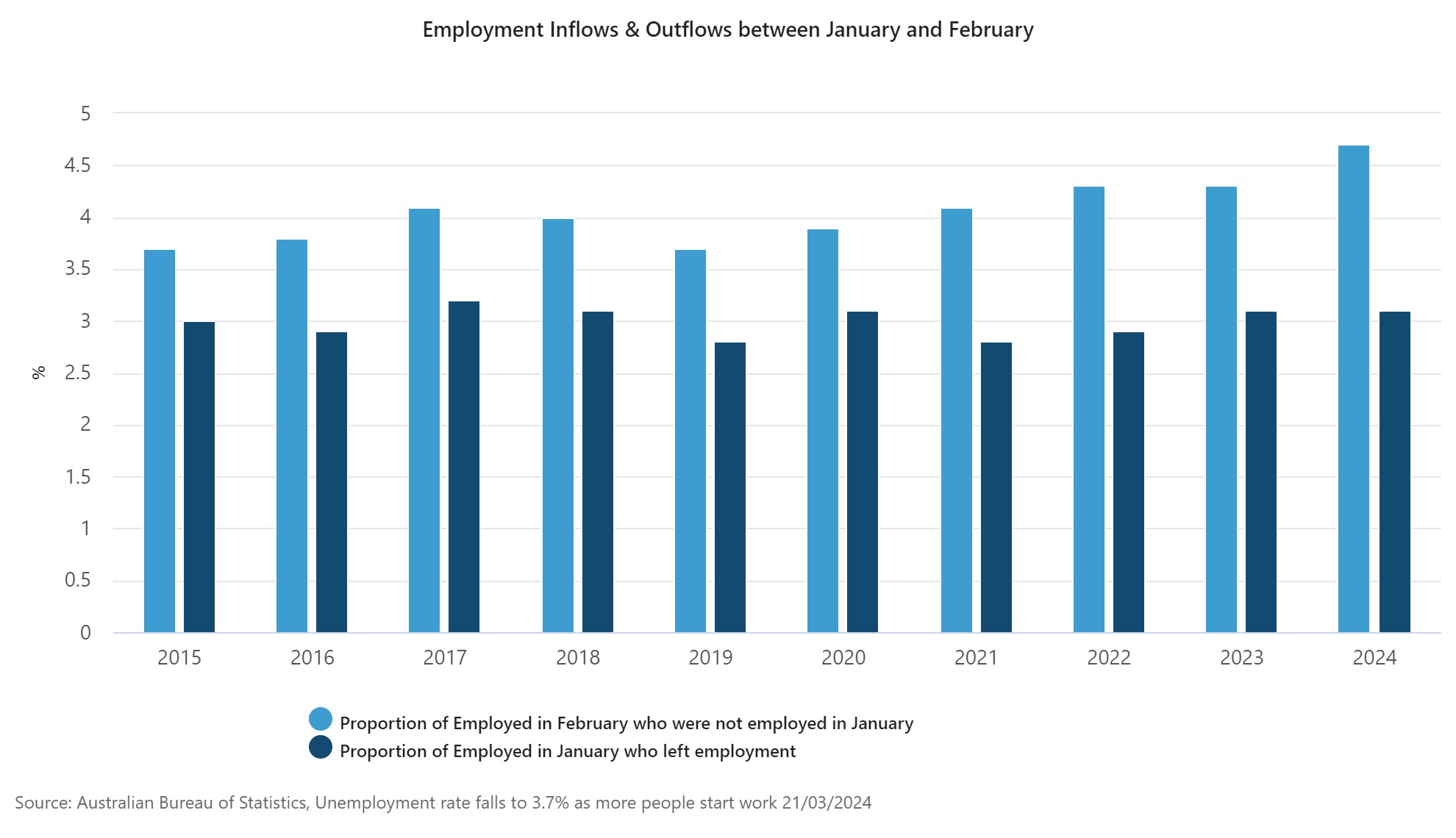

Australia's unemployment rate has fallen to 3.7% in February, according to data released by the Australian Bureau of Statistics (ABS), with around 116,000 people starting jobs in February.
This significant drop of 0.4 percentage points indicates a volatile job market that defied many economists’ expectations. However, the underlying trend data paints a much more stable picture remaining at 3.8% for the sixth month in a row.
With the Reserve Bank of Australia (RBA) “keeping a keen eye” on the employment figures, it could signal higher rates for longer as inflation may prove stickier than first thought.
Bjorn Jarvis (pictured above), ABS head of labour statistics, said with the number of unemployed falling by 52,000 people, the unemployment rate is where it had been six months earlier.
The large increase in employment in February followed larger-than-usual numbers of people in December and January who had a job that they were waiting to start or to return to. This translated into a larger-than-usual flow of people into employment in February and even more so than February last year.
“In contrast, we again only saw around 3.1% of employed people in January leaving employment by February, which was similar to last year and has remained relatively constant over time,” Jarvis said. “This shows that there is a wider gap than we would usually see between the numbers of people entering employment and leaving employment.”
“In addition, in looking ahead to next month, the number of people in February waiting to start work in March was back to around what we would usually see,” Jarvis said.

A strong job market is generally seen as a boon for the Australian economy. Increased employment often translates to higher household income, boosting consumer spending and economic activity. This can stimulate business growth, further fuelling job creation in a cycle.
However, the Reserve Bank of Australia (RBA) will be closely monitoring this data, as a robust job market can also lead to inflationary pressures.
RBA governor Michele Bullock said as much in her post-OCR press conference on Tuesday; “We will be keeping a keen eye on employment figures.”
“The risks to our outlook remain finely balanced and the isn’t yet won on inflation. The Board remains resolute in its determination to return inflation to target.”
With inflation coming in at 3.4% in the 12 months to January and rising only 0.6% in the December 2023 quarter, the figure remains above the RBA’s target band.
And while the central bank may have held the cash rate at 4.35% at its March meeting, Bullock repeatedly emphasised that the outlook was “uncertain” and the Board was “not ruling anything in or out for interest rates”.
When more people are employed and earning incomes, they have more money to spend, which can push up prices. To curb inflation, the RBA may consider raising interest rates, potentially impacting borrowing costs for mortgages and other loans.
For now, the status quo among economists is two interest rate cuts in the second half of 2024. However, as we look to the past, things can change quickly in economic and monetary policy.
Adding another dimension to the economic picture is Australia's burgeoning population. The ABS reports a population increase of 2.5% to 26.8 million in the year to September 2023.
This growth is primarily driven by net overseas migration, accounting for 83% of the growth with temporary work and study visas fuelling the influx.
A larger population could also put strain on resources and infrastructure, potentially leading to wage pressures and further impacting inflation.
The RBA will consider these population trends alongside the job market data when making decisions about interest rates.

Australia's robust job market and population growth are positive signs for the economy. However, the RBA will need to navigate this strong performance carefully to maintain price stability and avoid overheating the economy.
What do you think about the latest employment data? Comment below.
